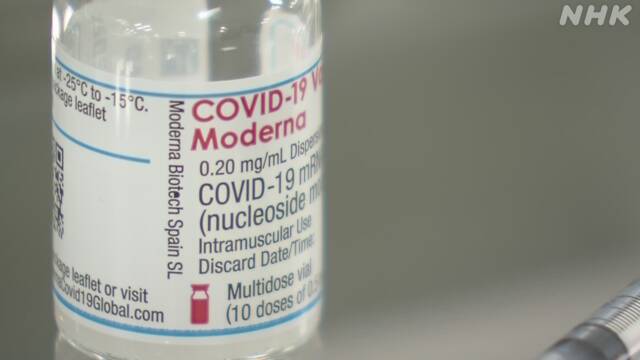Nuvaxovid's new coronavirus vaccine is said to have less frequent side reactions than the Pfizer and Moderna vaccines, which are commonly given in Japan.
Vaccines such as Pfizer and Moderna have a mechanism in which the spike protein of the new coronavirus is produced in the body by administering the substance "mRNA" that transmits genetic information, and antibodies against the virus are produced, but in the Novaxovid vaccine, it is artificially produced. The administration of the spike protein itself provokes an immune response.
According to the attached documents of each company's vaccine, the percentage of major adverse reactions seen in overseas clinical trials
was 16 years or older in Pfizer
. %, 72.6% after the second inoculation,
▽ malaise is 41.5% after the first inoculation, 55.5% after the second inoculation,
▽ fever of 38 degrees or more is 2.7% after the first inoculation, 2 13.6% after the second inoculation,
In the modelna, those who were 18 years old or older and
had pain at the site of inoculation were 83.7% after the first inoculation, 88.2% after the second inoculation, and
▽ malaise was 37.2% after the first inoculation, the second. After the first inoculation, 65.3%,
▽ fever of 38 degrees or more is 0.8% after the first inoculation, 15.5% after the second inoculation, etc.
According to the materials of the research group of the Ministry of Health, Labor and Welfare regarding side reactions of vaccines, those who received vaccination in Japan had a fever of 38 degrees or higher in
0.9% after the first vaccination and 0.9% after the second vaccination. 21.3% in
Moderna, 2.3% after the first vaccination, and 60.1% after the second vaccination, which is higher than the clinical trials conducted overseas.
In contrast, Nova Bucks was 18 years of age or older and
had pain at the site of inoculation in 34.4% after the first inoculation, 59.7% after the
second inoculation, and 25.6 after the first inoculation. %, 49.5% after the second vaccination,
▽ Fever of 38 degrees or higher is 0.4% after the first vaccination, 5.7% after the second vaccination, etc. In the paper, no rare side reaction, an increase in myocarditis, was confirmed.
According to Tetsuo Nakayama, a specially appointed professor at Kitasato University who is familiar with vaccines, side reactions occur depending on the mRNA itself administered in the body and the components of the lipid that surrounds the mRNA with the Pfizer and Moderna vaccines, while with the Novabax vaccine, an immune reaction occurs. Vaccine is caused by a substance called "adjuvant" that strengthens the vaccine, and side reactions appear. This means that the difference in this mechanism also leads to the difference in the frequency of side reactions.
According to the package inserts of each company regarding the efficacy shown in clinical trials,
the effect of preventing the onset after two inoculations is 95.0% for Pfizer against conventional virus and 94.1% for Moderna against conventional virus. So, Novabacs says that it was 90.4% at the time when many alpha strains and beta strains were seen.
However, the effect on Omicron strains is expected to decrease with any vaccine.
According to data from the UK health authorities, the effectiveness of Pfizer and Moderna vaccines to prevent the onset of Omicron strains
dropped to about 20% 20 weeks after
the second vaccination, but ▽ booster dose 2 After a week to four weeks, it rose from 65% to 75%.
In addition, the CDC = Centers for Disease Control and Prevention in the United States analyzed the effect of preventing hospitalization during the period of the Omicron strain
. ,
▽ It was 91% within 2 months from the booster dose, and 78% within 4 to 5 months.
The results of an analysis of the effect of the Novabax vaccine on preventing the onset and hospitalization of the Omicron strain have not been published so far, but according to Novabax, neutralization that suppresses the action of the Omicron strain after the second vaccination. The antibody level was less than a quarter of the value for conventional viruses.
However, after the third vaccination, it recovered to a higher level than after the second vaccination.

